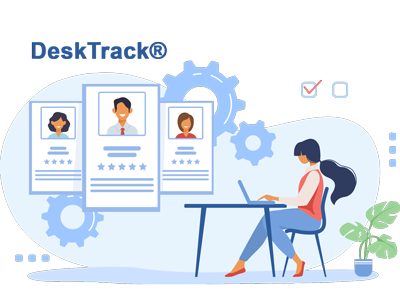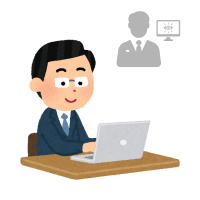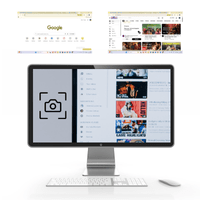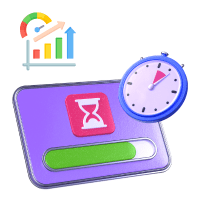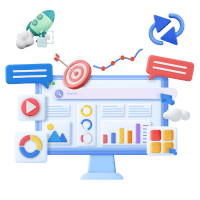Idle time which is also known as free time or unproductive time is time when employees are not engaged in any productive work. This includes break time, meeting time, etc. The prominent causes of idle time in offices are system breakdown, seat shifting, interrupted internet connections, personal breaks, strikes, meetings, and similar other reasons. Since employee idle time is a crucial component of workplace productivity, knowing it better is essential. In this blog, we have elaborated on the importance of tracking idle time for businesses, and methods to track idle time. Also, we have discussed ways to reduce idle time in the office.
Types of Idle Time
There are two different types of idle time – Planned and Unplanned. Let us discuss both in-depth:
- Planned
Break times during work hours like lunchtime, short breaks, meetings and games & activity time comprise planned idle time in offices. Since these idle times are planned, they do not hamper employees’ productivity if taken as scheduled.
- Unplanned
When employees do not engage in any productive work and have zero system activity, this is regarded as unproductive idle time. This type of idle time is unethical, reduces productivity, and increases operational costs in businesses.
Employees should only be idle for the planned timings and try to keep unplanned idle time minimum to improve their productivity. Also, employees must ensure that they plan enough idle time for their employees so that they do not feel burnout. Enough planned idle time, especially break time reduces unplanned idle time.
Why Track Idle Time in Businesses?
Companies are worried about reducing idle time to enhance the chances of increasing revenue as the ultimate goal of businesses is to maximize their revenues. Employees usually find different ways to monitor their employee’s idle time and look for solutions to reduce them. But why should companies use system idle time tracker software?
Idle time Tracking helps employers to identify their employee’s actual break times which is impossible to do manually for every person in the office. However, calculating idle time only based on computer activity for every job role is also not suitable. Offline meetings and other similar activities are also useful components of productive tasks at the offices.
So, employees should use the best time tracking software that records such activities as well as identify the actual idle time of employees.
Software for idle time tracking is a reliable way to collect data on employees’ offline activities. This software provides organizations with additional ways to access a holistic view of employees’ workplace productivity.
Best time tracker provide employees with comprehensive reports on their computer activities. Employers can improve their employees’ productivity by noting down their performance during active and inactive sessions and finding solutions for minimizing distractions.
How to Track Idle Time?
Flexible work hours are today’s trend where employees can work as per their schedules and maintain work-life balance. However, employers are not very fond of flexibility at the workplace as it is not convenient for them to track employees’ activity in such work modes. So, they find different ways to track their employees’ idle time.
There are different time tracking software available in the market today to track employees’ idle time. However, finding the best idle time tracker software is essential for seeking quality results. If you are also looking for an efficient time tracking tool for your organization to know your staff’s accurate idle time, then DeskTrack can be an ideal choice.
Ways to Reduce Idle Time
Not only employees are responsible for increasing idle time in offices. If officials plan strategically, they can effectively reduce their employees’ idle time. Here are some steps employers can take to minimize idle time at work:
Learn Employee Behavior
Organizations that are aware of their employees’ behavior are in a better position to improve productivity. When employers know how and where their employees are spending their time, they can make better plans to reduce idle time and enhance productivity.
Scheduling
Knowing the idle time of employees is helpful for employers to schedule tasks and projects accordingly. Tracking helps to assign the right number of people required for different tasks and projects.
Provide Support
When employers track their employees, they can easily know what issues their employees are facing, where they are struggling, and other similar issues. This way monitoring employees’ activities and tracking their behavior enables employers to identify ways to support employees and help them be more productive.
Invest in Idle Time Prevention
Undoubtedly, working non-stop for entire work hours without breaks is impossible. Studies also show that people should take a break of 2-5 minutes every hour to maintain good health.
Idle time tracking helps business owners prioritize planned idle time so that they have the least unplanned downtime. Forming policies to regularly maintain equipment, taking care of employees’ mental and physical well-being, and optimizing their work performance will help in reducing malfunctioning, absenteeism, burnout, and of course, unplanned idleness.
Conclusion
Throughout this text, we found that tracking employees’ idle time is effective for both employees and employers. Employers can track the actual system activity of their employees by idle time tracking.
Also, they can get insights into workplace productivity, and know when their employees are taking breaks mostly. These insights will help employers to improve workflow and have a holistic overview of office time utilization.
Management is more informed when they have tools to track employees’ time management. This helps in improving productivity and accountability in the workplace.
On the other hand, employees can become more productive while maintaining their health when working under tools to track their idle time.
